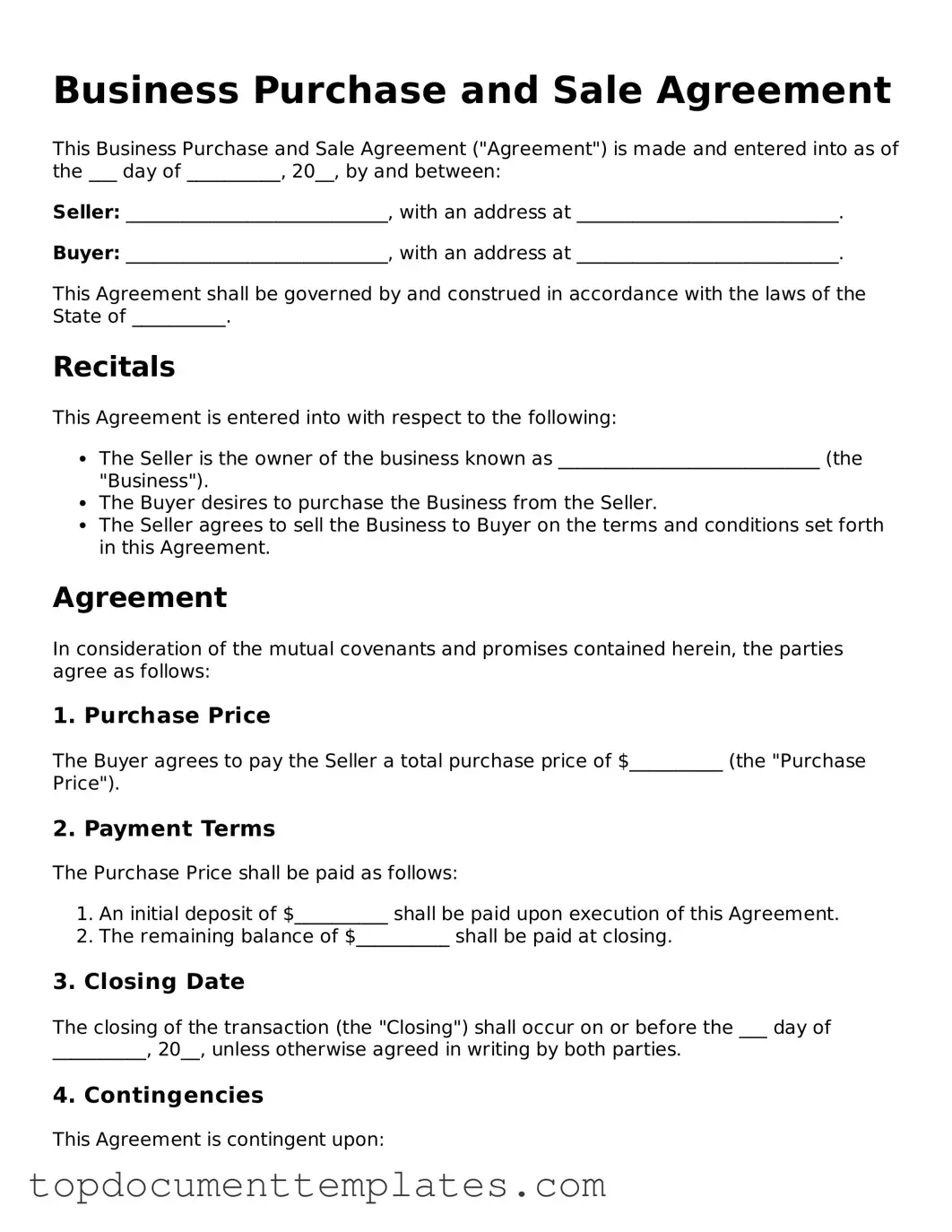Official Business Purchase and Sale Agreement Template
A Business Purchase and Sale Agreement is a legal document that outlines the terms and conditions under which a business is bought or sold. This agreement serves to protect the interests of both the buyer and the seller, detailing aspects such as price, payment terms, and any contingencies. Understanding this form is essential for a smooth transaction process.
To get started, fill out the form by clicking the button below.
Open This Form
